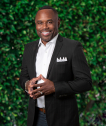Honest conversations about diversity, equity and inclusion (DEI) in the workplace are difficult and uncomfortable at times. But having them is the first step to create a better workplace for all. Companies looking to create a better diversity, equity and inclusive strategy should know two things:
- You will not always get it right all at once, and that is OK.
- Your strategy will evolve over time, and it should to meet the needs of your employees and clients.
GHJ Partner and Chief Strategy Officer Mari-Anne Kehler, who is also a Certified Diversity Professional and a leader in GHJ’s DEI strategy, sits down with Derrick Coleman (managing director and leader of GHJ’s BIPOC Cohort) and Anita Wu (managing director and leader of GHJ’s Women’s Empowerment Cohort) about the importance of a DEI strategy, having tough conversations and how to get started.
DEVELOPING A DIVERSITY, EQUITY AND INCLUSION (DEI) STRATEGY
MARI-ANNE KEHLER: In 2020, LinkedIn reported that hiring at all levels of DEI professionals increased by more than 90 percent. Why should organizations develop a DEI strategy? Because they feel they “should” or to make an impact in the community?
ANITA WU: I work with companies – be it our clients or studios within the entertainment community, who normally already have a DEI strategy, so it is a matter of assessing how that strategy has shifted and where they need to pivot.
DERRICK COLEMAN: Our clients are privately held middle market companies and may not have a strategy yet. They are coming at this from different places, but either way, most organizations need to develop a workable strategy and up their game.
WHY NOW?
MAK: If a client asks why a DEI strategy is important, what do you say?
AW: No question, aside from being important to a company’s culture, there is a real business case for DEI. Most of my clients are in the entertainment business, which has been scrutinized for some time on diversity issues. People are now loudly demanding respect and more diversity. I equate strategy with preparedness. From a business perspective, a DEI strategy will improve the sourcing, attraction and retention of the best talent.
The value we provide to our clients requires critical out-of-the-box thinking and creativity brought about by diversity of thought and different experiences. It just makes good business sense. A recent Boston Consulting Group study found a strong correlation between diversity in management teams and higher revenues due to innovation.
DC: The cost of minimal diversity comes in a variety of forms. Each year, more than two million Americans leave their jobs due to discrimination and unfair working conditions. A study by the Center for American Progress found that discrimination costs companies approximately $64 billion annually. The price of inaction is often magnified as companies find themselves forced to address DEI issues through a reactive lens rather than a strategic, proactive one.
WALKING THE WALK
MAK: If you do not have a strong DEI strategy that you are actually living on a day-to-day basis, you are missing an opportunity and you are squandering potential, both in terms of people and ability to reach the market. The opposite is true too – you can have a DEI statement, but are you living it?
AW: The right people need to guide the strategy as well. Mari-Anne, you have been living and guiding this all along. Being a Certified Diversity Professional (CDP) is an extension of the work you have been doing. Having informed guidance is important to navigate the hurdles that are part of the journey. The authenticity of a company’s DEI statement is not difficult to interpret by employees and clients. When done right, the outcome is strong retention of both.
GETTING STARTED
MAK: Harvard Business Review found that nearly half of mid-size Fortune 500 companies offer some form of diversity training. However, if improperly executed, these programs can often reinforce bias or receive backlash. If someone came to you and said they were starting from nowhere, what would you suggest as the best way to begin?
DC: A starting point would be to have an open dialogue about DEI to help break down silos and communication barriers. Really listen to how people feel. That will set the foundation for conversations in the future.
By improving the quality of your organization’s everyday conversations, you will develop a culture of increased openness, respect for differences and understanding. This will fuel better collaboration, more innovation and greater effectiveness, even beyond topics related to DEI. It builds company muscle for having difficult conversations.
MAK: What is the first step?
DC: The first step is about discovery — not setting an agenda or duplicating diversity initiatives that seemed effective in other organizations. It involves gaining awareness of the types of diversity within and across groups and the context in which DEI plays out for individuals, teams and the organization as a whole.
In order to set a direction, create alignment and generate commitment to DEI, senior leaders must take the first steps. They must articulate their individual and collective perspective, identity, values and culture. They must also consider how experiences of power and privilege may affect their approach and effectiveness —and that of others — and evaluate how DEI dynamics affect their marketplace and their business strategy.
AW: First, assess where you are as an organization through such avenues as anonymous pulse surveys, formal career advisor pairings and informal mentoring. Be open to any and all feedback. Build a team that will craft a DEI strategy that is intentional, measurable and transparent. Secure buy-in and commitment from the top of the organization to invest time, energy and funds to support the DEI strategy. Ensure there is a way for members to express their concerns and be heard, without fear of retaliation.
But first, companies must have earned their employees’ trust in order for them to talk about these issues openly. They need to know that what they have to say will be encouraged. Companies should have alternatives like buddies and coaches where they can express their concerns to gain a pulse of what is the real deal. Also, provide forums for folks to speak openly and honestly, like GHJ’s BIPOC and Women’s Empowerment cohort meetings, if they are comfortable doing so. It is essential for leaders within the organization to actively engage in these forums.
TRUST THE PROCESS
MAK: If we are trying to build trust with people, does trust lead to open dialogue or does open dialogue lead to trust? Has open dialogue deepened relationships either one-on-one or among teams?
DC: Yes, I think it has. Relationships have grown. Everyone is understanding and learning more about each other, which helps foster better dialogue going forward. Embracing diversity includes the diversity of viewpoints. In the past it has been suppressed — employees have been told not to talk about race at work, but we need to change our thinking to open up a space, starting at the top. Having a safe and respectful sharing of different ideas, and embracing difficult conversations, makes for a more thoughtful and connected workplace.
…
This year, GHJ’s #BeMore blog is dedicated to discussing issues surrounding diversity. This blog is the first in a series of conversations about topics related to diversity, equity and inclusion. GHJ leaders are invited to share their perspective, experience and story to help shed light and inspire others to #BeMore for their coworkers, community and firm. We invite you to listen, share and join the conversation.




